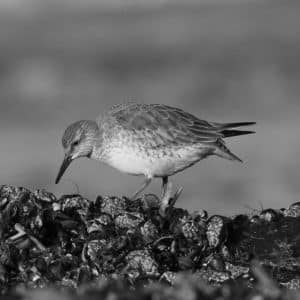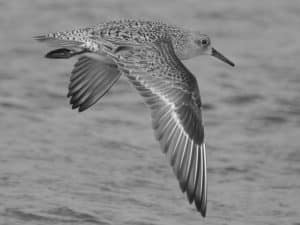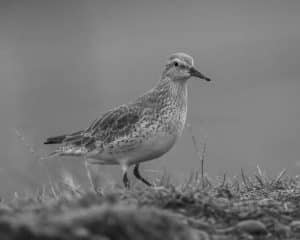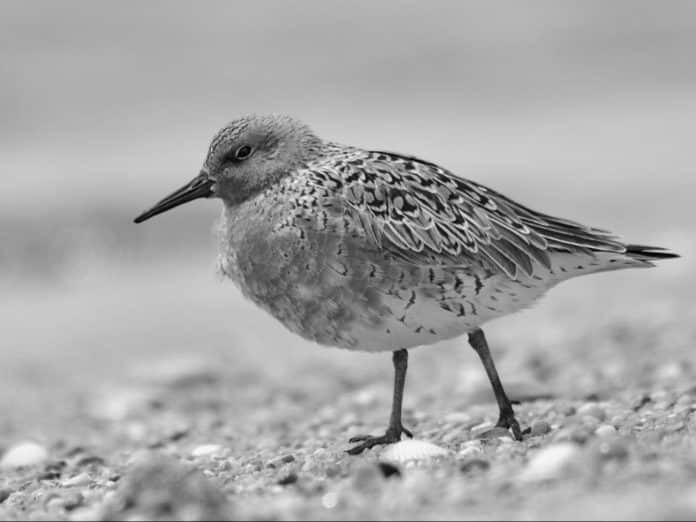Introduction to the Red Knot Species
The Red Knot in Tanzania is a remarkable bird species that migrates over vast distances, connecting continents and captivating birdwatchers with its beauty and resilience. In Tanzania, along the stunning African coast, the Red Knot finds a sanctuary amidst its annual migration. With its distinctive reddish plumage and long, slender bill, the Red Knot is a sight to behold. This article delves into the fascinating world of the Red Knot in Tanzania, exploring its habitat, migration patterns, conservation efforts, and the annual spectacle that draws nature enthusiasts from around the world.
Habitat and Migration Patterns of the Red Knot

The Red Knot is a migratory bird that breeds in the Arctic tundra during the summer months and then embarks on an incredible journey to its wintering grounds. Tanzania’s African coast serves as an essential stopover site for these birds during their long and arduous migration. The coastal wetlands and mudflats provide an abundant food source for the Red Knot, as they feed on mollusks, crustaceans, and insects found in the intertidal zones. The vast stretches of sandy beaches and coastal dunes also offer ideal roosting areas for the birds, providing shelter and safety during their stay.
The migration of the Red Knot is a remarkable feat, as they cover immense distances between their breeding and wintering grounds. From the Arctic, they traverse thousands of kilometers to reach the African coast, with some individuals traveling all the way from as far as Siberia. This extraordinary journey showcases the resilience and adaptability of these birds, as they navigate unpredictable weather conditions and face various challenges along the way.
The Significance of Tanzania’s African Coast for Red Knots
Tanzania’s African coast plays a crucial role in the survival and conservation of the Red Knot species. The coastal habitats provide essential feeding and resting areas for the birds, allowing them to replenish their energy reserves before continuing their migration. The rich biodiversity of the intertidal zones, with its abundance of invertebrates, serves as a vital food source for the Red Knots during their stopover.
Moreover, the African coast of Tanzania offers a unique combination of habitats, including mangroves, estuaries, and sandy beaches, which cater to the varying needs of the Red Knots. These habitats support a diverse array of other bird species as well, creating a vibrant ecosystem that relies on the delicate balance of nature. Protecting these coastal areas is of utmost importance to ensure the continued survival of the Red Knots and the preservation of the overall biodiversity of the region.
Red Knot Population and Conservation Efforts in Tanzania
The Red Knot population in Tanzania is a matter of concern due to various threats that the species faces. Habitat degradation, pollution, and climate change pose significant risks to the survival of these birds and their crucial stopover sites along the African coast. However, dedicated conservation efforts are underway to protect the Red Knots and their habitats in Tanzania.
Local and international organizations are collaborating to raise awareness about the importance of the Red Knots, advocating for the conservation of their habitats, and working towards sustainable practices. These conservation efforts include habitat restoration, monitoring programs, and research initiatives to better understand the ecology and behavior of the Red Knots. By involving local communities, scientists, and policymakers, a collective effort is being made to safeguard the future of these magnificent birds.
The Annual Red Knot Spectacle in Tanzania

Each year, an extraordinary event takes place along Tanzania’s African coast – the red knot spectacle. During the peak of the Red Knots’ migration, thousands of these birds gather along the shores, transforming the landscape into a mesmerizing scene. The sight of these elegant birds, with their vibrant plumage, feeding, and resting in unison, is a true spectacle of nature’s wonders.
The red knot spectacle is not only a visual delight but also a testament to the resilience and determination of these birds. It is a reminder of the interconnectedness of ecosystems and the importance of preserving the habitats that facilitate such extraordinary events. Birdwatchers and nature enthusiasts from around the world flock to Tanzania to witness this awe-inspiring phenomenon, contributing to the local economy and promoting eco-tourism in the region.
The Role of Local Communities in Protecting Red Knot Habitats
The conservation of Red Knot habitats in Tanzania relies not only on international organizations and scientific research but also on the active involvement of local communities. The coastal communities living in proximity to the Red Knots’ habitats play a vital role in protecting these areas and ensuring the sustainability of the bird populations.
Through community-based initiatives, such as ecotourism projects and sustainable fishing practices, local communities are embracing the importance of conserving the Red Knots and their habitats. By actively participating in the protection and management of these areas, they are contributing to the long-term survival of the Red Knots and preserving the natural beauty of their surroundings.
Best Practices for Observing Red Knots in Tanzania
When observing Red Knots in Tanzania, it is crucial to prioritize the well-being of the birds and their habitats. Here are some best practices to ensure a responsible and enjoyable birdwatching experience:
- Respect the birds’ space: Maintain a safe distance from the Red Knots to avoid causing them stress or disrupting their natural behavior.
- Follow designated trails: Stick to designated paths and trails to minimize disturbance to the birds and their habitats.
- Avoid littering: Dispose of any waste properly and leave no trace behind to help preserve the pristine nature of the coastal areas.
- Stay informed: Educate yourself about the Red Knots and their conservation status, enabling you to appreciate their significance and contribute to their protection.
- Support local initiatives: Choose eco-friendly tour operators and engage in activities that support local communities and sustainable practices.
By following these best practices, you can enjoy the beauty of the Red Knots while ensuring their well-being and the preservation of their habitats.
Opportunities for Eco-Tourism and Birdwatching in Tanzania

Tanzania’s African coast offers exceptional opportunities for eco-tourism and birdwatching enthusiasts. The Red Knot spectacle, along with the diverse birdlife found in the region, attracts visitors from around the world who seek to immerse themselves in the wonders of nature.
Various tour operators and lodges in Tanzania provide specialized birdwatching tours and accommodation options that cater to the needs of nature enthusiasts. These tours offer a chance to witness the Red Knot spectacle firsthand, as well as explore the other natural treasures of the region, including national parks, marine reserves, and vibrant coastal communities.
Engaging in eco-tourism in Tanzania not only allows visitors to appreciate the beauty of the Red Knots but also contributes to the conservation efforts in the region. The revenue generated from responsible tourism helps support local communities and conservation initiatives, ensuring the long-term sustainability of the Red Knot habitats.
Research and Ongoing Studies on Red Knots in Tanzania
Scientific research and ongoing studies are essential in furthering our understanding of the Red Knots and their conservation needs in Tanzania. Researchers and scientists are conducting studies on various aspects of the birds’ ecology, behavior, and migration patterns to inform conservation strategies effectively.
These studies involve tracking individual birds using satellite tags and geolocators, monitoring their feeding patterns and habitat preferences, and assessing the impact of environmental factors on their populations. By gathering data and conducting long-term research, scientists can identify key areas for conservation, propose necessary measures, and contribute to the overall knowledge of these fascinating migratory birds.
Conclusion: Celebrating the Beauty and Resilience of the Red Knot in Tanzania
The Red Knots’ annual migration to Tanzania’s African coast is a spectacle that showcases their beauty and resilience. These remarkable birds connect continents, rely on critical stopover sites, and captivate the hearts of birdwatchers and nature enthusiasts. It is crucial to recognize the significance of the Red Knots and their habitats, and to support the conservation efforts that aim to protect these magnificent creatures.
Tanzania’s African coast provides a haven for Red Knots, offering a diverse range of habitats, abundant food sources, and the opportunity for eco-tourism. By celebrating the beauty and resilience of the Red Knots, we can inspire others to appreciate and protect the natural wonders of our world. Let us come together, embrace sustainable practices, and ensure the continued survival of the Red Knots in Tanzania, for generations to come.

































